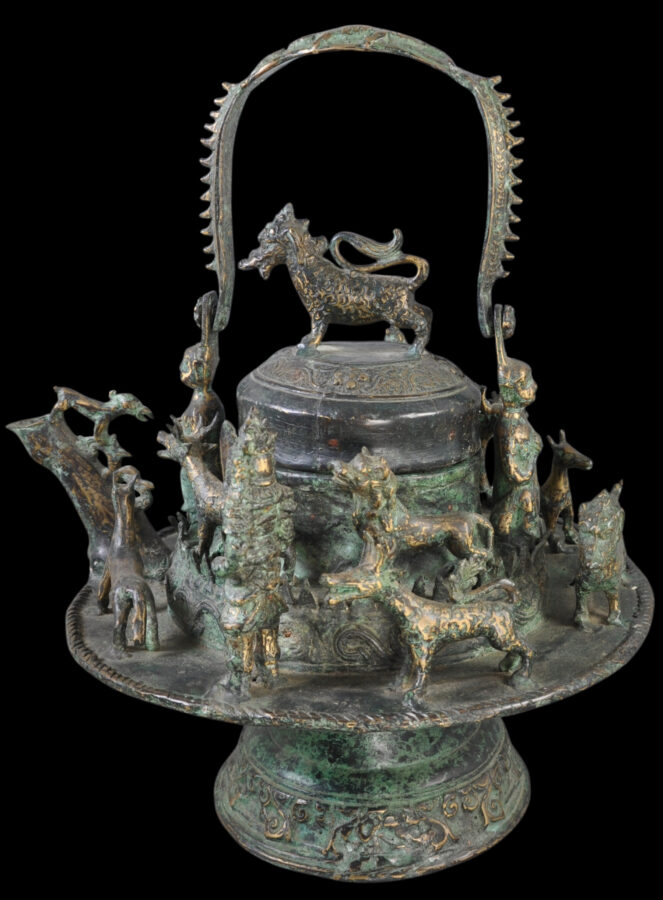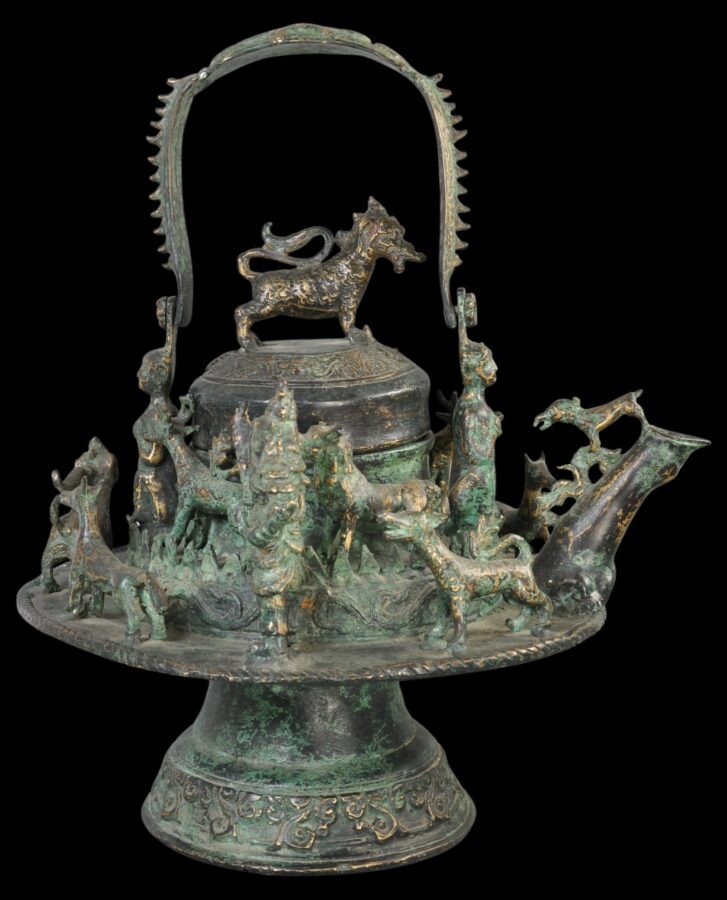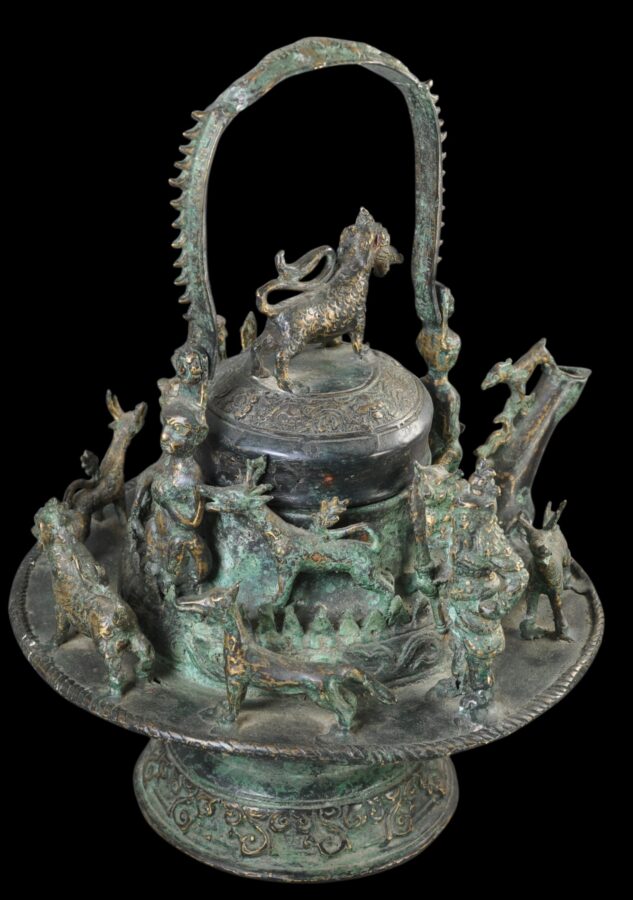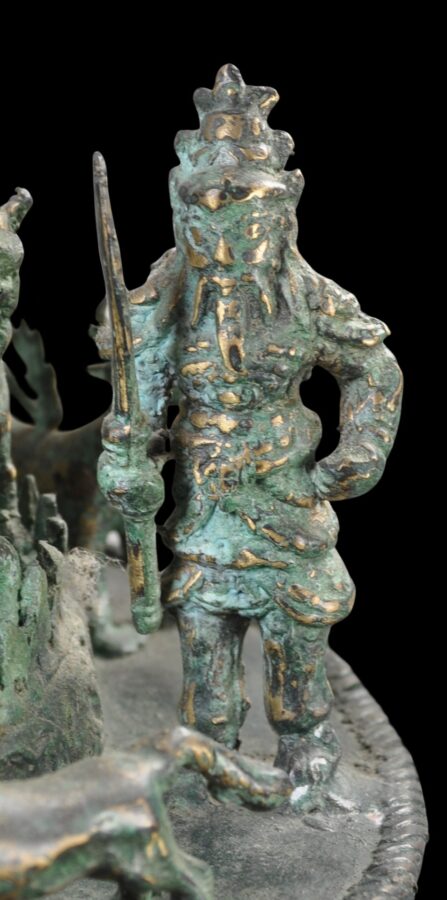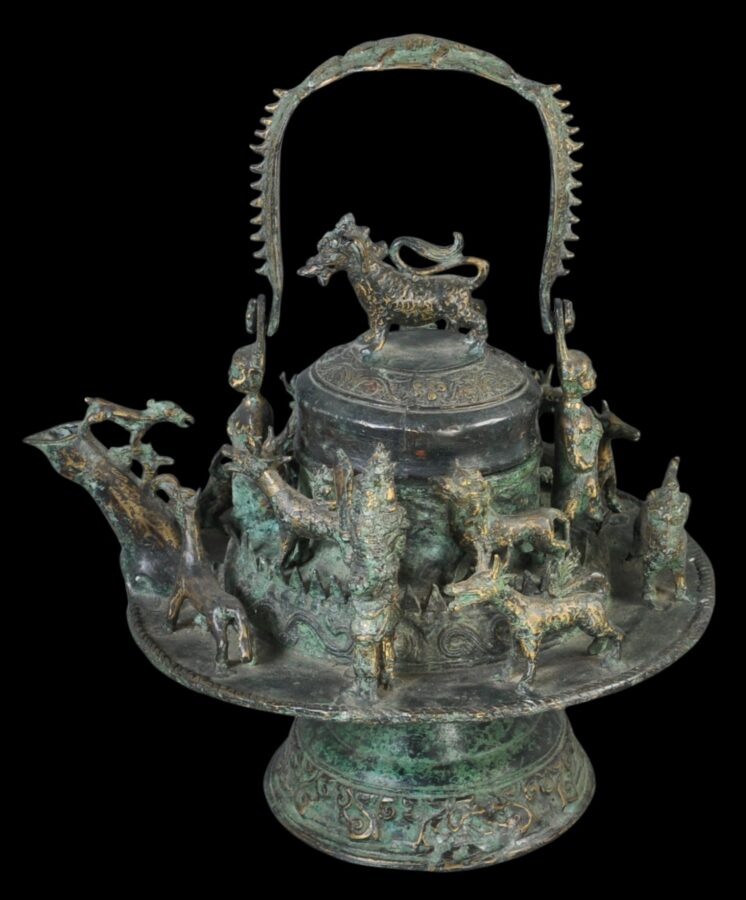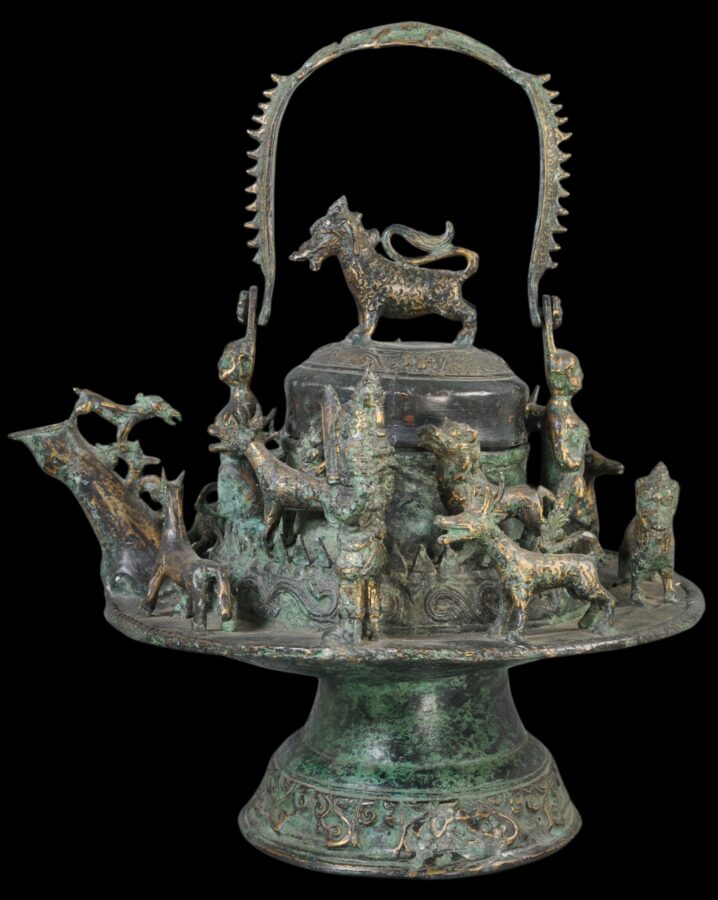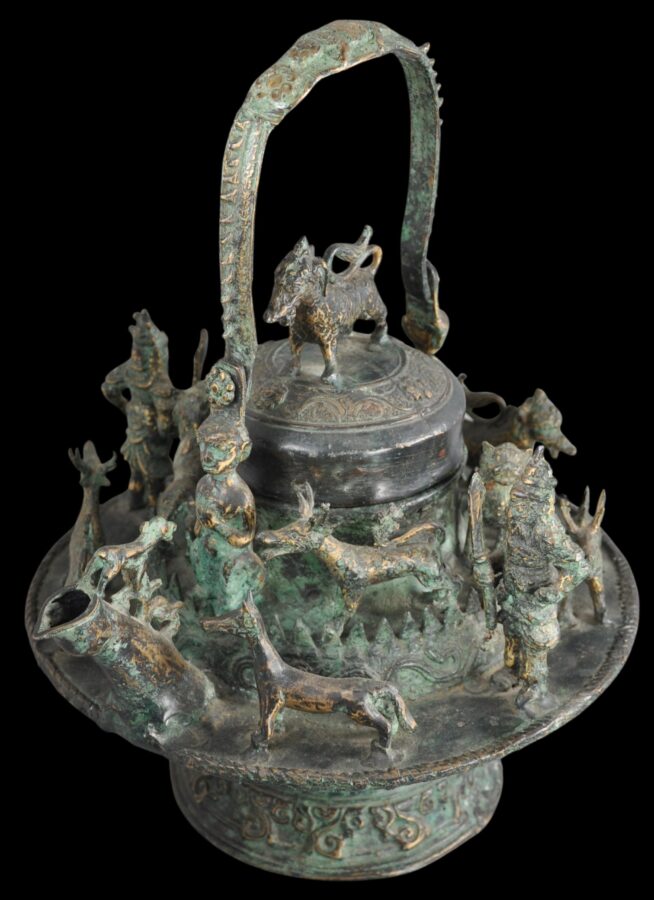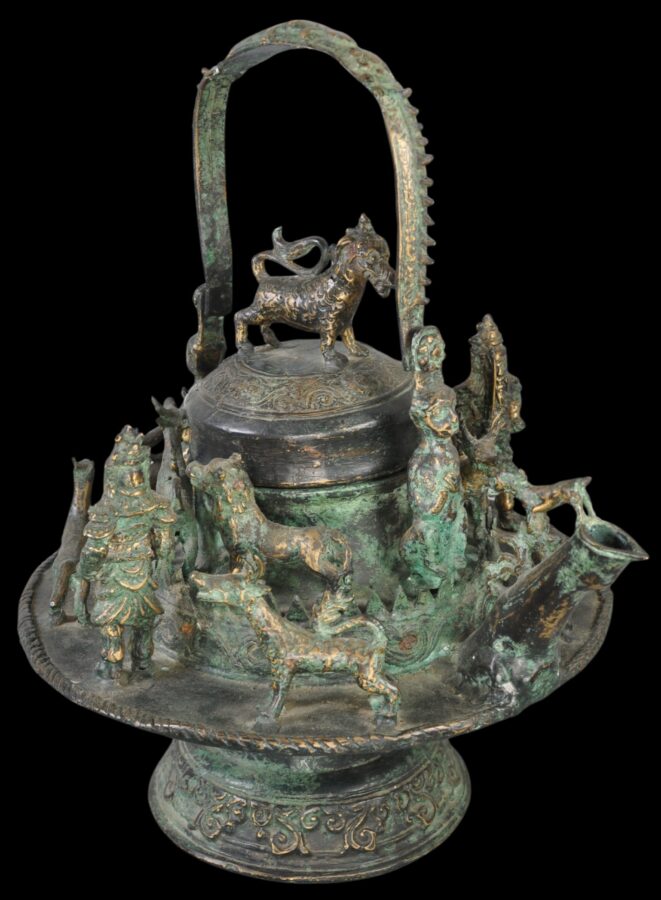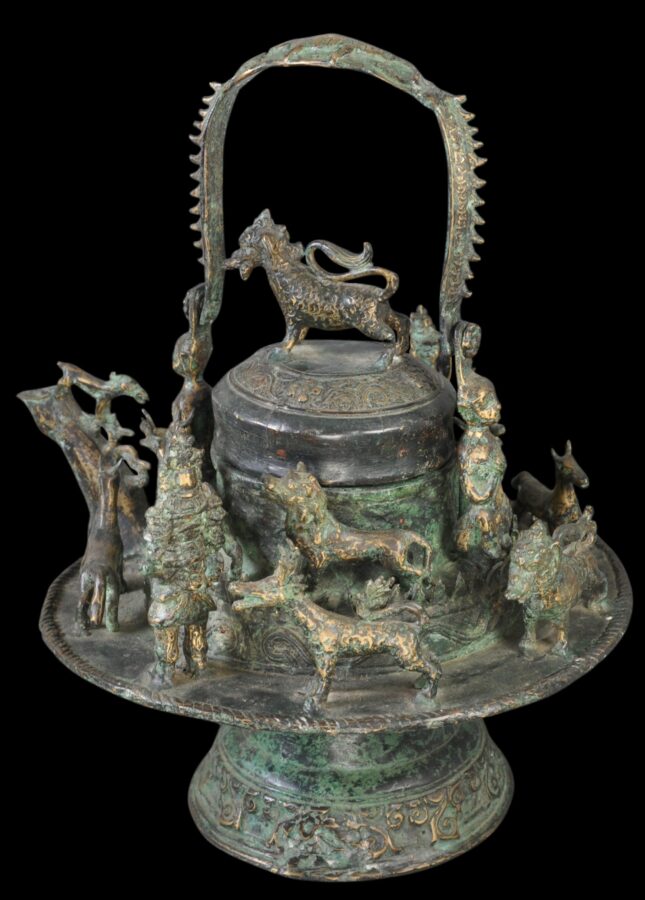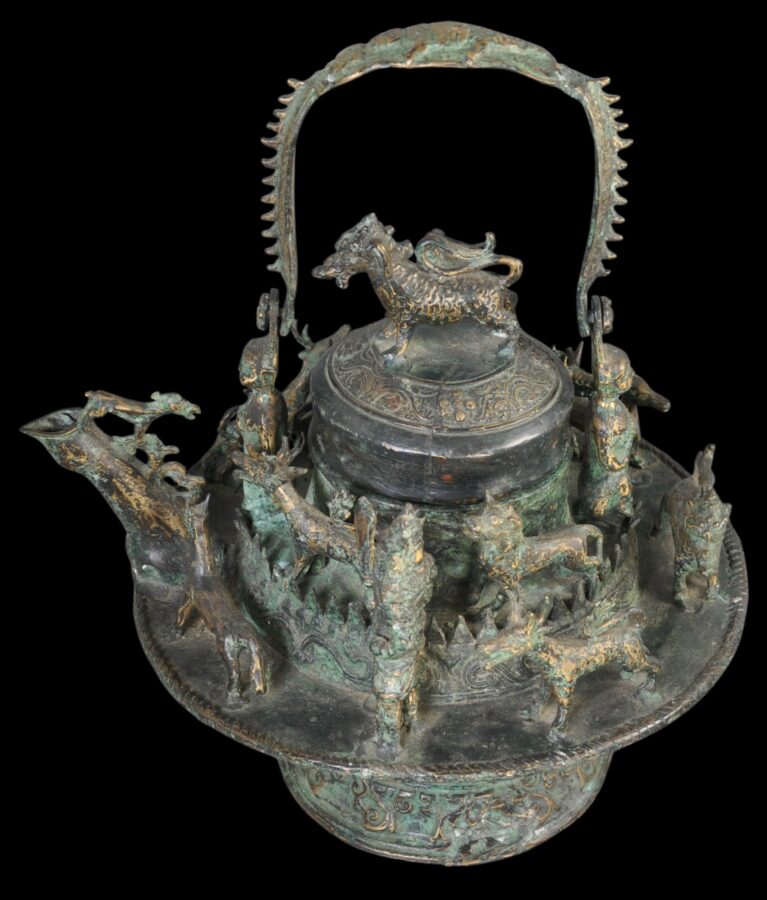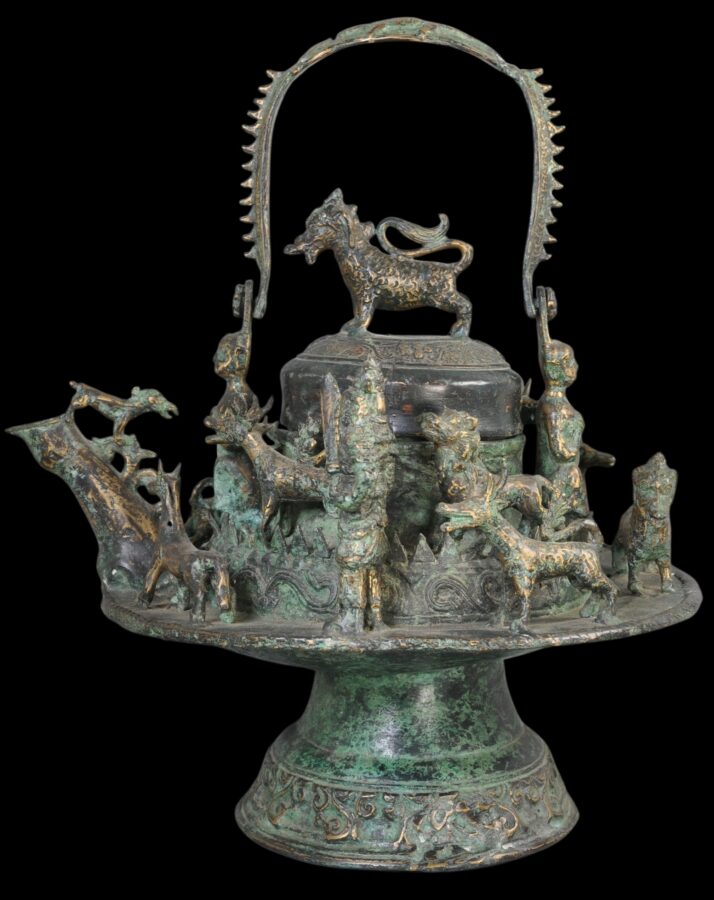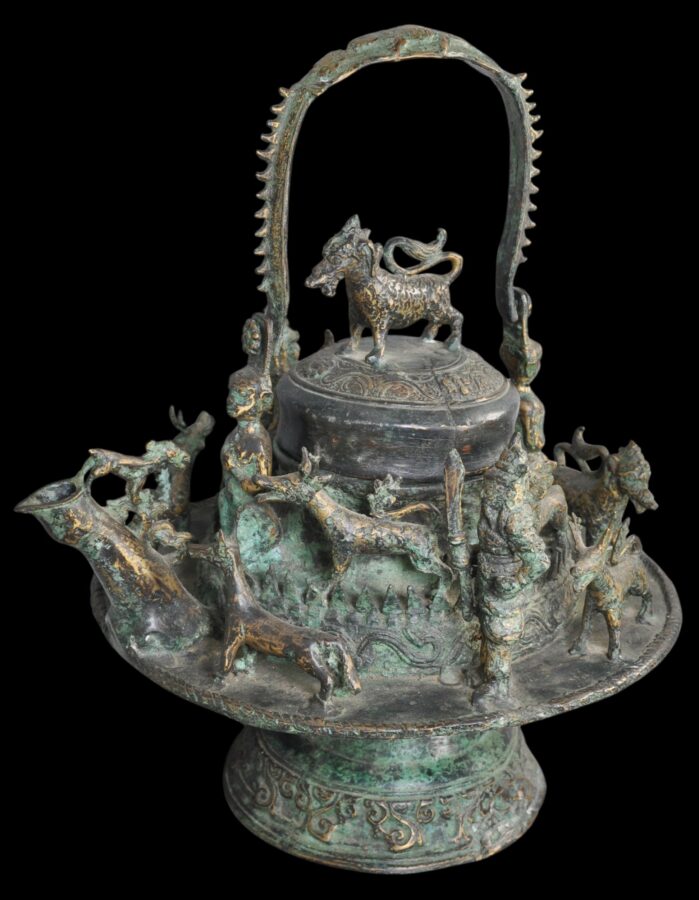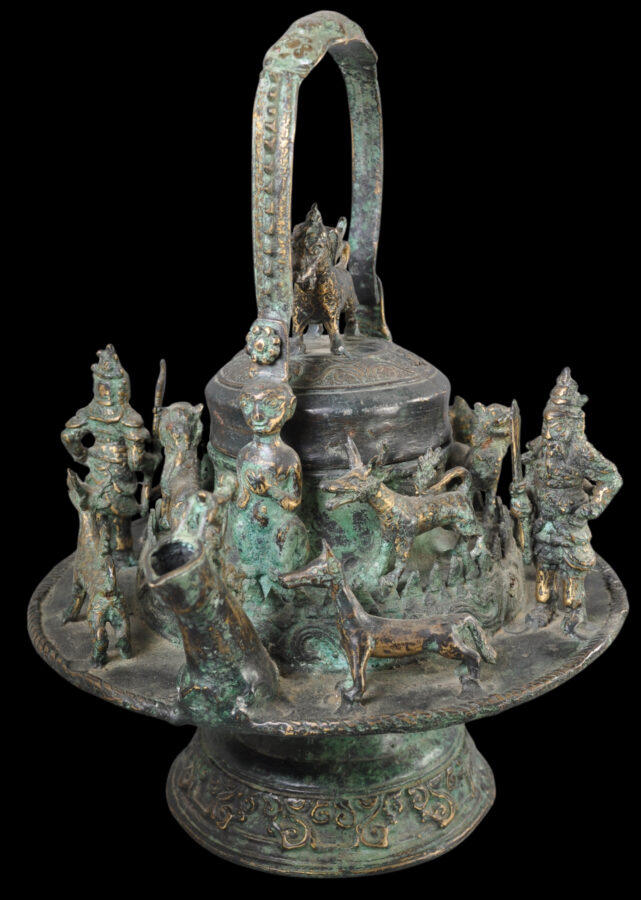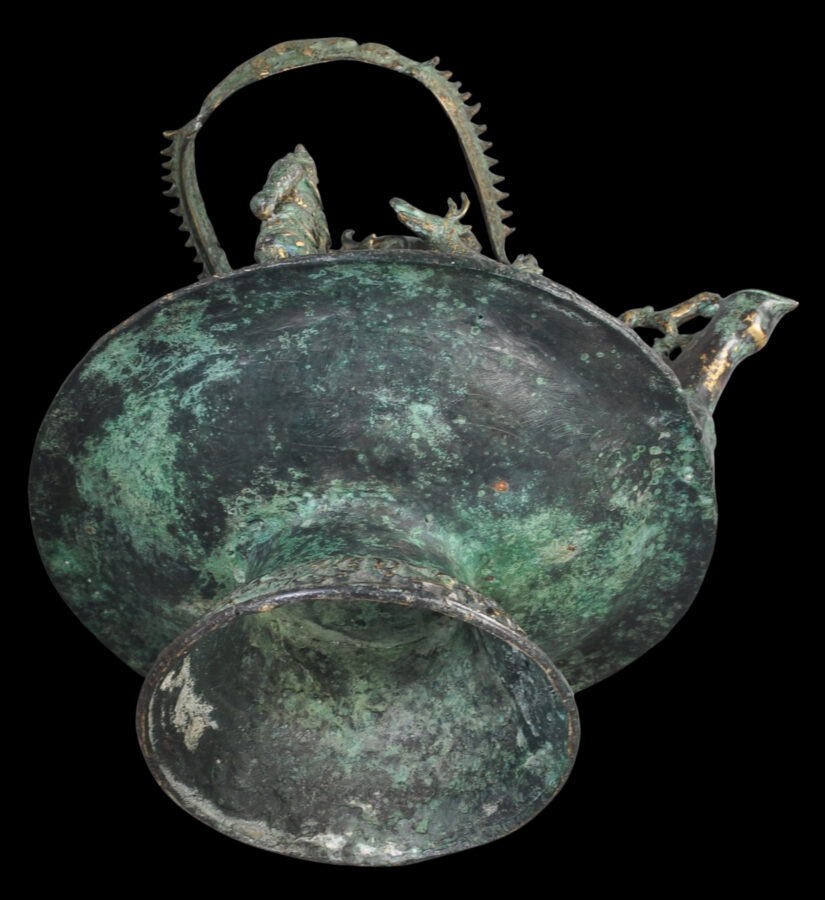Enquiry about object: 9570
Early Bronze Borneo Kettle Cast with Chinese Door Guardians (Menshen)
Borneo, Malaysia/Brunei/Indonesia 17th-18th century
height: approximately 36cm, diameter: approximately 29cm, weight: between 5 to 7kg
Provenance
UK art market
Large bronze kettles, cast using the lost wax process, are well known on the island of Borneo, which is shared between three countries, namely Malaysia (its two states Sabah and Sarawak), Brunei, and Indonesia. But this example is rarer and earlier than most extant examples, which are similarly massive but have a more rounded shape.
The example here sits on a flared foot that has been cast with lacy fern-like motifs. The body is of unusually compressed form and on the flattened rim are a variety of moulded dog-like creatures, ancestor figures, deer and other mythical creatures. Importantly, there are also a pair of Chinese door guardian figures (menshen) each of which holds a sword. This is the first time we have encountered such overtly Chinese human-like figures on Borneo metalwork. The two appear likely to have been modelled on what the casters saw in a local Chinese temple (there have long been Chinese communities and Chinese temples on Borneo.)
The body has a tier with more creatures and then a lid or cover surmounted by a Chinese-style qilin. A spout leads from the base and that is decorated with a dog-like creature atop some foliage.
The hinged swing handle has spiky elements up the sides and a central salamander-like figure and a flower cast to the top of the handle.
We are aware of two examples of this form that have been illustrated: one in the Sarawak Museum in Kuching (Malaysia) which is illustrated in Chin (1980, p. 46) and again in Invernizzi Tettoni & Ong (1996, p.92) and described variously as ‘rare’ and ‘early’; and a second kettle in Singapore’s National Museum, attributed to Sabah, and illustrated in Singh (1995, p. 22.) Neither has been cast with Chinese figures such as the example here.
Chinese door gods or guardians, known as menshen, are divine guardians of doors and gates traditionally used by the Chinese of south-eastern China and the Chinese emigres who migrated from this part of China to Southeast Asia. These Chinese tended to be adherents of Taoism (Daoism) which allowed for the existence of a large number of gods and deities. Typically, menshen are seen in pairs, standing on either side of a door or entrance.
Traditional brass and bronzeware items from Borneo do frequently exhibit strong Chinese influence such as dragon and fo dog motifs. Children’s stories that are still told today in Borneo feature tales of Chinese princes and dragons. One tells of a dragon that lives atop Mount Kinabalu (Borneo’s highest mountain) where it guards a magnificent precious stone the size of a peacock’s egg. The Emperor of China hears about the stone and tells his three sons that whichever one of them brings back the stone will be made his heir; the other two will be killed. One son manages to trick the dragon and captures the stone. But the other sons lie to their father that they were the ones to take the stone. Ultimately, the Emperor discovers this deception and the wayward sons escape China, one of whom returns to Brunei and founds a princely dynasty there.
So Chinese motifs do appear on local bronze and brassware on Borneo but as mentioned, the bronze kettle here is the only example of which we are aware that has been cast with Chinese human figures (albeit door guardians.)
Such large vessels originally were intended to hold drinking water but it is likely that over time they evolved to be stores of wealth. They might have been traded as a form of currency and probably served as major gifts at the weddings of important people.
The vessel here has a splendid, varying, rich green-grey patina consistent with considerable age. It is in excellent condition.
References
Chin, L., Cultural Heritage of Sarawak, Sarawak Museum, 1980.
Invernizzi Tettoni, L. & E. Ong, Living in Sarawak, Thames & Hudson, 1996.
Singh, B., Malay Brassware, National Museum of Singapore, 1985.


